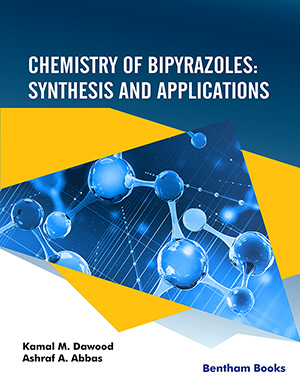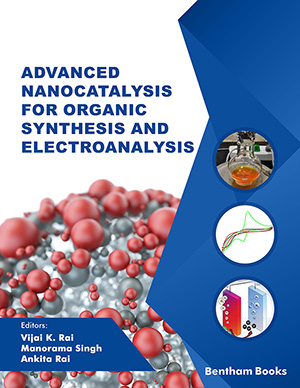
Abstract
Supercritical fluid extraction (SFE) has been a widely studied green technology to obtain triterpenoids (TTs) enriched extracts from various vegetable matrices.
This review covers research advances regarding the SFE of TTs, with emphasis on biomass sources, operating conditions and their optimization, and modeling. As in other applications of the supercritical technology, carbon dioxide is the common solvent adopted, being generally modified with small amounts of cosolvents (e.g. ethanol, methanol) to increase TTs solubility, as many of these molecules are polar. The operating conditions reported for the SFE of TTs from biomass lie between 40 and 90°C, 100 and 500 bar, and 0 and 5 wt. % of modifier. An extensive list of relevant works in this field is also provided, where the most important experimental and/or theoretical information is presented.
Exploitation is also addressed through a compilation of registered patents on TTs extraction and purification, particularly on strategies to concentrate these compounds after organic solvent or supercritical carbon dioxide extraction. In the whole, there is a research and intellectual property basis to support further industrial attempts to implement processes combining SFE and purification technologies for TTs production.
Keywords: Supercritical fluid extraction, triterpenoids, triterpenic acids, purification, patents.
Mini-Reviews in Organic Chemistry
Title:Extraction and Purification of Triterpenoids using Supercritical Fluids: From Lab to Exploitation
Volume: 11 Issue: 3
Author(s): Marcelo M.R. de Melo, Rui M.A. Domingues, Armando J.D. Silvestre and Carlos M. Silva
Affiliation:
Keywords: Supercritical fluid extraction, triterpenoids, triterpenic acids, purification, patents.
Abstract: Supercritical fluid extraction (SFE) has been a widely studied green technology to obtain triterpenoids (TTs) enriched extracts from various vegetable matrices.
This review covers research advances regarding the SFE of TTs, with emphasis on biomass sources, operating conditions and their optimization, and modeling. As in other applications of the supercritical technology, carbon dioxide is the common solvent adopted, being generally modified with small amounts of cosolvents (e.g. ethanol, methanol) to increase TTs solubility, as many of these molecules are polar. The operating conditions reported for the SFE of TTs from biomass lie between 40 and 90°C, 100 and 500 bar, and 0 and 5 wt. % of modifier. An extensive list of relevant works in this field is also provided, where the most important experimental and/or theoretical information is presented.
Exploitation is also addressed through a compilation of registered patents on TTs extraction and purification, particularly on strategies to concentrate these compounds after organic solvent or supercritical carbon dioxide extraction. In the whole, there is a research and intellectual property basis to support further industrial attempts to implement processes combining SFE and purification technologies for TTs production.
Export Options
About this article
Cite this article as:
Melo M.R. de Marcelo, Domingues M.A. Rui, Silvestre J.D. Armando and Silva M. Carlos, Extraction and Purification of Triterpenoids using Supercritical Fluids: From Lab to Exploitation, Mini-Reviews in Organic Chemistry 2014; 11 (3) . https://dx.doi.org/10.2174/1570193X113106660002
| DOI https://dx.doi.org/10.2174/1570193X113106660002 |
Print ISSN 1570-193X |
| Publisher Name Bentham Science Publisher |
Online ISSN 1875-6298 |
Call for Papers in Thematic Issues
Active Alkaloids: Structure, Mechanism of Action, Chemical Synthesis, and Biosynthesis
The scope of this topic encompasses the structure, mechanism of action, chemical synthesis, and biosynthesis of active alkaloids. Alkaloids, a class of nitrogen-containing organic compounds with alkaline properties, originate from a diverse array of sources. Many alkaloids exhibit significant biological activities and serve as key constituents in numerous medicinal plants. ...read more
Advancement in Petroleum Geochemistry
The scope of the thematic issue on advancements in petroleum geochemistry encompasses a broad range of cutting-edge research and technological innovations. This issue aims to highlight the latest developments in understanding the chemical and physical properties of petroleum and its geological formations. Key areas of focus include: Unconventional Resources: Exploring ...read more
Advancements in Synthesis of Bioactive Compounds
This thematic issue focuses on elucidating advanced synthetic strategies for bioactive compounds, with the primary objective of deepening understanding of the rational design and construction of target molecules. The exploration encompasses a diverse range of techniques, established name reactions, and cutting-edge synthetic methodologies. Specifically, the issue delves into the synthesis ...read more
Advances in Sustainable Synthesis and Applications of Cyclic Carbonates: From Green Chemistry to Advanced Materials
Cyclic carbonates have become a focus of attention because of their potential in sustainable chemistry, energy solutions, and advanced materials. Recent breakthroughs in their synthesis emphasize the use of CO₂ as a renewable feedstock, which is a step toward reducing carbon emissions. New catalytic processes, including both traditional metal catalysts ...read more
Related Journals
 34
34
- Author Guidelines
- Graphical Abstracts
- Fabricating and Stating False Information
- Research Misconduct
- Post Publication Discussions and Corrections
- Publishing Ethics and Rectitude
- Increase Visibility of Your Article
- Archiving Policies
- Peer Review Workflow
- Order Your Article Before Print
- Promote Your Article
- Manuscript Transfer Facility
- Editorial Policies
- Allegations from Whistleblowers
Related Articles
-
Zoledronic Acid -a Multiplicity of Anti-Cancer Action
Current Medicinal Chemistry Leukocyte P2 Receptors: A Novel Target for Anti-inflammatory and Antitumor Therapy
Current Drug Targets - Cardiovascular & Hematological Disorders Calcium Channel Blockade and Peroxisome Proliferator Activated Receptor γ Agonism Diminish Cognitive Loss and Preserve Endothelial Function During Diabetes Mellitus
Current Neurovascular Research New Functions of the Inositol Polyphosphate 5-Phosphatases in Cancer
Current Pharmaceutical Design Hypothalamic Glucose Sensing and Glycaemic Disease
Current Diabetes Reviews An Overview of Biotechnological Applications in Ayurveda: Amalgamation of Modern Techniques and Science
Current Traditional Medicine Association Between Intra-Hospital Uncontrolled Glycemia and Health Outcomes in Patients with Diabetes: A Systematic Review of Observational Studies
Current Diabetes Reviews Heme Oxygenase -1 Gene Therapy: Recent Advances and Therapeutic Applications
Current Gene Therapy Diabetic Retinopathy Leading to Blindness- A Review
Current Diabetes Reviews The Role of Intracellular 35-Cyclic Adenosine Monophosphate (cAMP) in Atherosclerosis
Current Vascular Pharmacology Impact of Metabolic Surgery on Type-2 Diabetes Remission
Current Diabetes Reviews Maximizing Baculovirus-Mediated Foreign Proteins Expression in Mammalian Cells
Current Gene Therapy Real-time Medical Visualization of Human Head and Neck Anatomy and its Applications for Dental Training and Simulation
Current Medical Imaging Platelets: Their Potential Contribution to the Generation of Beta-amyloid Plaques in Alzheimer’s Disease
Current Neurovascular Research Roles of Casein Kinase I η and δ in Gastrointestinal Cancers: Potential New Screening Markers and Drug Targets
Current Cancer Therapy Reviews Natural Compounds Used as Therapies Targeting to Amyotrophic Lateral Sclerosis
Current Pharmaceutical Biotechnology Neuroprotection of Thioredoxin1 in the Brain
Current Alzheimer Research Development of RNA Aptamer-Based Therapeutic Agents
Current Medicinal Chemistry Activin Receptor-Like Kinase 1: a Novel Anti-angiogenesis Target from TGF-β Family
Mini-Reviews in Medicinal Chemistry Lipid Engineered Nanoparticle Therapy for Burn Wound Treatment
Current Pharmaceutical Biotechnology
























